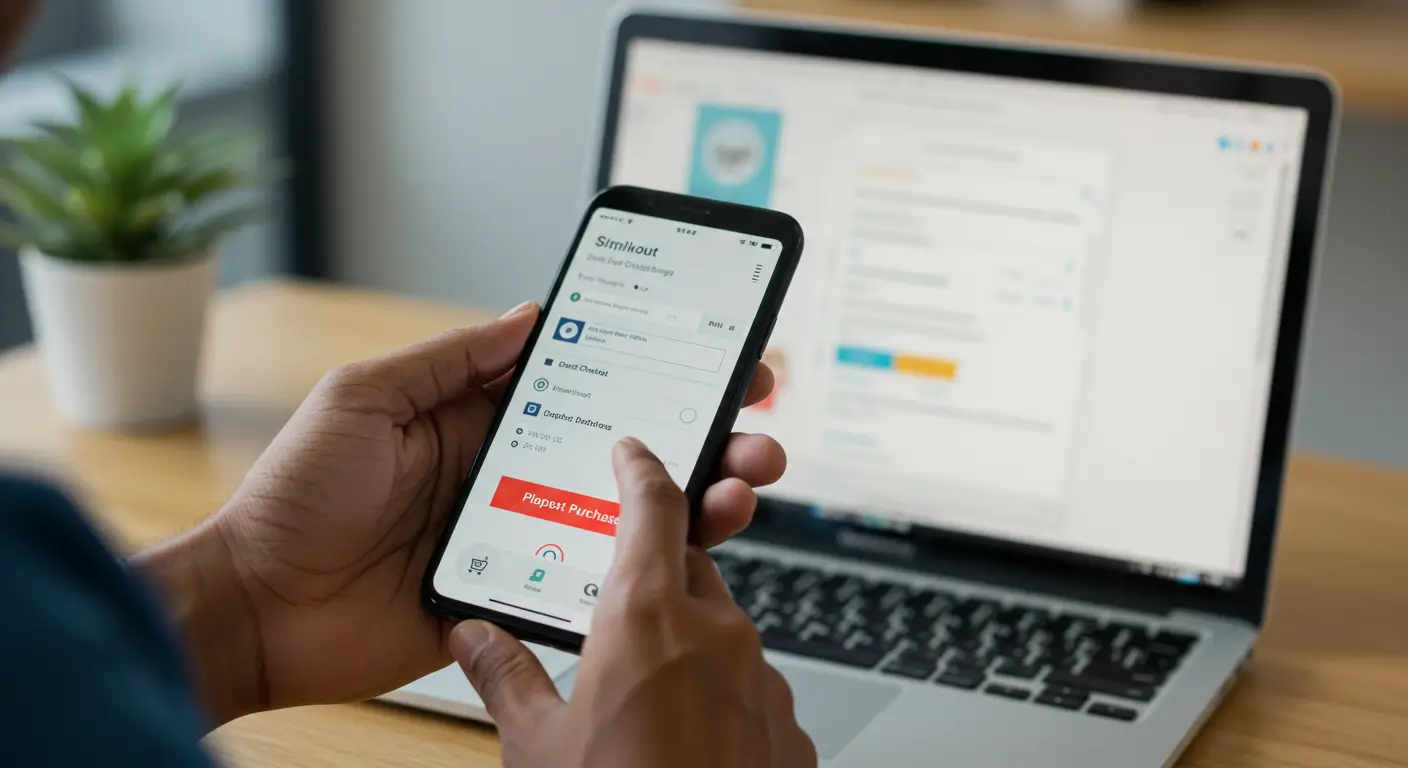WordPress is a powerful and versatile Content Management System (CMS) that allows users to create and manage websites with ease. It’s the go-to platform for beginners and professionals alike, offering flexibility, a vast array of features, and an extensive library of plugins and themes.
Why Choose WordPress for Your Website?
If you’re new to website design, WordPress is an excellent choice. It’s user-friendly, highly customizable, and doesn’t require extensive coding knowledge. Whether you’re setting up a personal blog, a business site, or an online store, WordPress has you covered.
Understanding the Basics of WordPress
What is a Content Management System (CMS)?
A CMS is a software application that helps users create, manage, and modify digital content without needing specialized technical knowledge. WordPress, being the most popular CMS, simplifies the entire website creation process, making it accessible to everyone.
Key Features of WordPress
WordPress stands out due to its ease of use, extensive customization options, and a vast library of plugins that add functionality. It’s open-source, meaning it’s free to use, and there’s a large community of developers and users who contribute to its growth.
Getting Started with WordPress

How to Choose a Domain Name
Your domain name is your website’s address on the internet. Choose something memorable, relevant to your content, and easy to spell. It should reflect your brand or the purpose of your website.
Selecting a Web Hosting Service
A web host stores your website’s files and makes them accessible to visitors. Look for a hosting service that’s reliable, offers good customer support, and has the features you need, such as SSL certificates and backups. Many beginners opt for WordPress-specific hosting to simplify the setup process.
Installing WordPress
Most web hosts offer one-click WordPress installation. Once installed, you can log into your WordPress dashboard, where you’ll start building your website.
Exploring the WordPress Dashboard
Overview of the Dashboard
The WordPress dashboard is your control center. From here, you can manage your site’s content, appearance, plugins, and settings. Familiarize yourself with the dashboard to navigate efficiently.
Understanding WordPress Themes
Themes determine the look and feel of your website. WordPress offers thousands of free and premium themes. Choose one that aligns with your brand and start customizing it to suit your needs.
Plugins: What They Are and How to Use Them
Plugins are add-ons that enhance the functionality of your WordPress site. From SEO tools to contact forms, there’s a plugin for almost everything. Install only what you need to keep your site running smoothly.
Designing Your WordPress Website

Choosing the Right Theme for Your Website
Selecting a theme is one of the most critical decisions you’ll make. Consider the design, functionality, and responsiveness of the theme. A clean, professional design will make a strong impression on visitors.
Customizing Your Theme: Basic Settings
Most themes offer customization options, allowing you to change colors, fonts, and layout elements. Use the WordPress Customizer tool to make these changes and see live previews.
Creating and Managing Menus
Menus help visitors navigate your website. Create a menu structure that’s easy to understand and leads visitors to essential pages. WordPress allows you to create multiple menus, such as primary, footer, and social menus.
Adding Widgets and Sidebars
Widgets are small blocks that add content or features to your website’s sidebars or footer. You can use widgets for things like recent posts, search bars, or social media links. Place them strategically to enhance user experience.
Creating Content for Your Website
Writing and Publishing Your First Blog Post
Content is king. Start by writing your first blog post. Use the WordPress editor to format your text, add images, and embed videos. Don’t forget to optimize your post for SEO by including keywords, meta descriptions, and alt text for images.
Creating Pages: About, Contact, and More
Pages are different from posts and are used for static content like About Us, Contact, or Services. Create these pages to give your visitors essential information about you and your business.
Organizing Content with Categories and Tags
Categories and tags help organize your content, making it easier for visitors to find what they’re looking for. Use categories for broad topics and tags for specific details.
Enhancing Your Website’s Functionality
Essential Plugins for Beginners
Start with basic plugins that enhance your website’s functionality, such as Yoast SEO for search engine optimization, Contact Form 7 for creating forms, and Akismet for spam protection.
SEO Plugins and Why They Matter
SEO plugins like Yoast or Rank Math help optimize your content for search engines, improving your site’s visibility. They guide you through adding meta tags, creating sitemaps, and more.
Social Media Integration
Connect your website to social media platforms to increase your reach. Use plugins like Jetpack or Social Snap to add social sharing buttons, display feeds, and automate content sharing.
Ensuring Your Website is Secure
Importance of Website Security
Website security is crucial to protect your data and maintain your site’s integrity. Hackers and malware can cause significant damage, so taking preventive measures is essential.
Top Security Plugins for WordPress
Install security plugins like Wordfence or Sucuri to monitor your site for threats, enable firewalls, and set up two-factor authentication. These tools offer peace of mind by keeping your site safe.
Regular Backups: How and Why
Regular backups ensure that you can restore your site if anything goes wrong. Use plugins like UpdraftPlus to schedule automatic backups and store them securely.
Optimizing Your Website for Speed
Why Website Speed Matters
A fast-loading website improves user experience and search engine rankings. Visitors are likely to leave if your site takes too long to load, so optimizing speed is crucial.
Tips for Improving Website Load Time
Compress images, use a content delivery network (CDN), and choose a lightweight theme to enhance your site’s speed. Caching plugins like W3 Total Cache can also help by storing static versions of your site.
Making Your Website Mobile-Friendly
The Importance of Mobile Responsiveness
With more people accessing the web via mobile devices, it’s essential that your website looks and functions well on smaller screens. Mobile responsiveness is also a factor in Google’s ranking algorithm.
How to Test and Improve Mobile Compatibility
Use Google’s Mobile-Friendly Test tool to see how your site performs on mobile devices. Optimize by using responsive themes, adjusting font sizes, and ensuring buttons and menus are easy to tap.
Understanding Analytics and Performance Monitoring
Introduction to Google Analytics
Google Analytics is a powerful tool that tracks your website’s traffic, user behavior, and conversion rates. Set it up to gain insights into how visitors interact with your site and identify areas for improvement.
How to Monitor Website Performance
Use tools like Google Search Console and Pingdom to monitor your site’s health and performance. Regularly check for issues such as broken links, slow pages, and security vulnerabilities.
Getting Your Website Ready for Launch
Final Pre-Launch Checklist
Before launching, review your site thoroughly. Check for typos, test all links, ensure mobile compatibility, and review SEO settings. Make sure everything is in place for a smooth launch.
Announcing Your Website
Once your site is live, announce it through social media, email newsletters, and word of mouth. A successful launch can help attract initial traffic and start building your audience.
Maintaining Your WordPress Website
Regular Updates and Maintenance
WordPress regularly releases updates to improve security and functionality. Keep your site up to date by installing these updates, along with updates for themes and plugins.
Dealing with Common Issues
Even with regular maintenance, issues may arise. Learn how to troubleshoot common problems like the White Screen of Death, 404 errors, and plugin conflicts. There are numerous online resources and communities that can help.
Troubleshooting Common WordPress Problems
Common Errors and How to Fix Them
Familiarize yourself with common WordPress errors, such as internal server errors or connection issues. Knowing how to fix these problems can save you time and frustration.
Where to Get Help and Support
WordPress has a large, active community. If you encounter problems, you can find support through forums, tutorials, and professional services. Don’t hesitate to seek help if needed.
Conclusion
Designing a WordPress website as a beginner may seem daunting at first, but with the right guidance, it’s entirely achievable. By following the steps outlined in this article, you can create a professional-looking website that meets your needs. Remember, practice makes perfect, so keep experimenting and learning as you go.
FAQs
What is the cost of creating a WordPress website?
The cost can vary based on factors like hosting, themes, and plugins. However, you can start with minimal expenses using free themes and plugins, and upgrade as needed.
How can I improve my website’s SEO?
Use SEO plugins, create high-quality content, and optimize your site’s speed and mobile-friendliness. Regularly update your content and build backlinks to improve rankings.
Can I change my theme after publishing my website?
Yes, you can change your theme anytime. However, make sure to preview the changes before making them live to ensure everything looks good.
What should I do if my website gets hacked?
If your site is hacked, restore it from a backup, change all passwords, and tighten security with plugins like Wordfence. Consider hiring a professional if the issue is severe.
Is WordPress suitable for e-commerce websites?
Absolutely! WordPress offers e-commerce plugins like WooCommerce that can turn your site into a fully functional online store.




